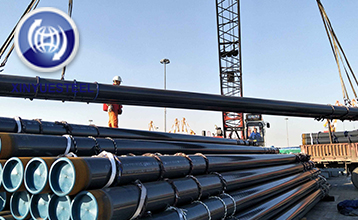The coal market will usher in the last wave of rebound in the first half of the year
May. 31, 2021
April and May are the traditional low season for residential electricity, but also the peak season for industrial electricity. From April to early May, coal prices in pitheads and ports both rose, which exceeded market participants' expectations. The closing price of thermal coal at the port increased by 31%, and the price of thermal coal futures has repeatedly closed the daily limit, setting a new high in the past eight years.

In mid-May, affected by policy expectations, the majority of coal transportation and trading companies implemented the requirements of higher-level meetings and actively lowered coal prices. Overlapping traders' fear of high sentiment, coal prices in production areas and ports fell. Starting yesterday, the Bohai Rim port market increased inquiries, but users generally kept prices down, and traders were unwilling to sell at low prices, resulting in a deadlock in transactions; more anchor ships under anchor, but most of them waited because the price was inconsistent. At this time, the replenishment of imported coal is limited, and coal stocks in power plants are still declining; end users will start purchasing before the "peak summer" from late this month to early June, prompting coal prices to stop falling and stabilize, and the coal market ushered in The last wave of rebound in the first half of the year.
After the Spring Festival, driven by the global economic recovery and loose monetary policy, the bulk commodity market has recently shown a rapid upward trend, and funds have continued to flow into the procyclical sector; among them, the resource-based coal market has benefited a lot. The increase in demand, the stability of supply, and the decrease in imports have pushed the supply in the production area to exceed demand. The rise of pit-mouth prices has accelerated and is difficult to control, which invisibly promotes a strong rebound in port coal prices. As the domestic economy continues to develop, production continues to grow, and industrial support is evident. After the Spring Festival, the daily consumption of key power plants in the eight coastal provinces quickly climbed to a high level of 1.8 million tons, although it was 20-30 lower than last year’s cold winter. 10,000 tons, but an increase of 100,000 tons compared to the same period in previous years. my country's epidemic prevention and control has achieved major successes, and the economy is gradually on track; while foreign epidemics have repeated again, manufacturing orders have accelerated back to China, stimulating domestic power demand growth. Data show that in April, thermal power generation increased by 12.5% year-on-year, the previous year was the base period, and the two-year increase was 6.7% year-on-year. In May, the hydropower was not fully developed, and the thermal power was still large.
Since April, coal mine safety production accidents have occurred in many places, and safety inspections of major coal producing areas have been intensified. At the same time, environmental protection supervision, over-production inspections, coal ticket restrictions, and coal-related anti-corruption have been in full swing, and domestic coal production has been suppressed. The gathering of coal carts at the entrance of the pit, and the unabated transportation of power plants, chemicals, building materials, coal chemicals and other users, promoted the overall tight market supply and soared coal prices in production areas. The higher-level competent authorities have held many supply guarantee meetings and introduced specific measures to actively guarantee the supply of coal and speed up the outbound transportation. However, the policy implementation and promotion were affected to a certain extent, the effect of guaranteeing supply was not as good as market expectations, and coal production and outbound transportation were tight. Under the expected drop, production areas pull carts and other coal, port ships and other cargoes, and key power plants have reduced coal stocks, causing market concerns about coal supply to ferment. In addition, in the process of implementing "carbon neutrality" and "carbon peaking", the coal industry has accelerated the elimination of outdated production capacity, and the concentration of the coal industry has continued to increase; once demand soars or imported coal drops drastically, the domestic market will be under demand and pressure will increase. Transportation and transportation are in a state of tension, and the rise in coal prices is expected.



